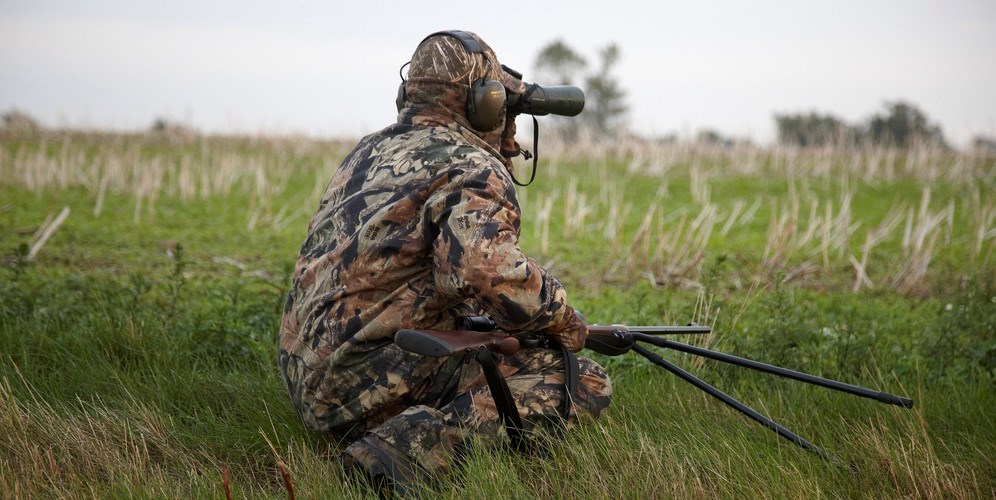
Stealth hunting. Photo: Sten Christoffersson
Stealth hunting
Stealth hunting is usually used to hunt ungulates such as elk and deer. Other small game such as fox, hare, rabbit and goose can also be hunted in this manner. This type of hunting can be carried out in bright daylight, as long as it is bright enough to shoot.
It is easier to stealth hunt when the landscape is hilly. It is important to be able to move behind some type of cover, for example heights, hedges, ditches and fences.
How is the hunting done?
The hunter slowly sneaks against the wind, stopping frequently to survey the terrain using binoculars. Often the hunter will only glimpse an ear or a piece of an antler, and this makes it more important to spend more time behind the binoculars than on the move. A single mistake can cause the game to spot you and run away.
Once the game has been discovered, it is important to try to get within shooting range. The hunter must move only when the game can’t see it, for example when it is grazing. It is not at all uncommon to find oneself stopping abruptly in the middle of a step and standing still for minutes. This can really test the hunter’s patience, but waiting for the right moment to shoot can be extremely thrilling.
Deer, elk, red deer and fallow deer
Since deer move in relatively small areas, they are particularly easy targets. Deer are also easily frightened. While fleeing, the deer will occasionally stop to examine the situation, and this can present new shooting opportunities.
Stealth hunting for elk works well in fields and clear-felled areas where the elk spends time in search of food.
Red deer are more elusive, thanks to their sharp eyesight and the fact that they disappear as soon as they sense trouble, unlike the elk.
Stealth hunting for fallow deer is common. They move around open spaces, even in the middle of the day. What makes it difficult is that they tend to move together in large groups, meaning there are many on guard and the hunter is more easily spotted. It is also difficult to pick out one suitable target in a large group without the risk of hitting another.

A large group of fallow deer. The problem is distinguishing one suitable target without the risk of hitting another. Photo: Hans Ring.
Wild boar
Stealth hunting for wild boar is an inefficient way to hunt.

Photo: Oscar Lindvall
The reason is their nocturnal habit and the fact that they spend their days among dense vegetation.
The exception is bright summer evenings when wild board forage for food in, for example, a corn field.
As long as you sneak up against the wind, you can get surprisingly close.
The wild boars are so noisy; they will usually not notice you when you sneak up on them.
The difficulty lies in picking out a suitable target, to avoid shooting a sow with boarlets or perhaps hitting another animal.
